Online shopping provides a quick and convenient way to purchase products, and this is especially true for the...
Portable, Folding & Dismantlable Scooters
Everyone loves that portable scooters reduce in size for easy storage and convenient transport – that’s why they are so popular in the mobility space. Electric portable scooters fall into two types: foldable scooters and dismantlable scooters. Foldable scooters conveniently fold down flat to fit into the trunk of an automobile. Some newer models fold into “suitcase styles” that users can pull behind them (like luggage) to navigate airport
Foldable Scooters vs. Devices that Disassemble
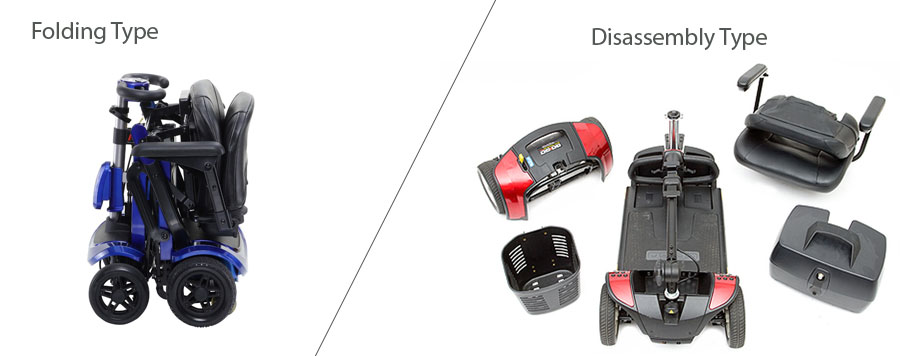
There are many advantages to implementing electric folding scooters for those who need safe, reliable transportation. These advantages include:
- Folding scooters help support an active lifestyle
- They are easy to maneuver
- Foldable scooters can navigate tight spaces
- They are able to travel short distances
- They feature lightweight designs
- Folding scooters fit into most car trunks
- They fold or disassemble for easy transport
- They are simple to operate
- They are better suited for vacation travel than standard scooters
- Several folding scooters are FAA-approved
- They are compatible with cruise ships, trains and hotels
- Foldable scooters are conducive to shopping, family gatherings, ballparks, theme parks, zoos and markets
- Electric folding scooters foster user independence
Scooter Profile

Scooter Designs
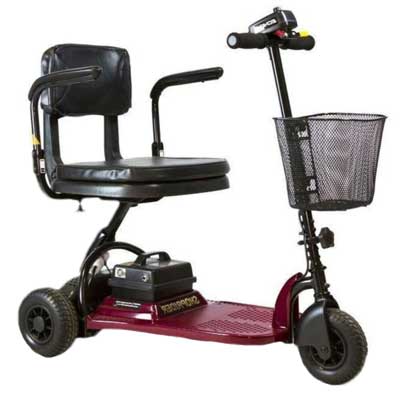
3-Wheel Folding Scooters
Three-wheel scooters have short turning radiuses; however, they are less stable than four-wheel scooter systems. To increase stability during use, some of these electric mobility devices come with small caster wheels or anti-tipper wheels that are integrated near the third wheel. Three-wheel electric scooters tend to have less legroom and often feature smaller seats. They generally weigh less, however, which makes them easier to transport. These devices are also more compact, making it easier to negotiate tight spaces.
Examples:
1. is a lightweight electric scooter that folds for easy transport, features an LCD screen with push buttons and has a range of up to 10 miles per charge.
2. Pride Go-Go LX 3-Wheel Scooter with Comfort-Trac Suspension (CTS) is easy to transport, has a swivel seat and features an LED headlight for better visibility.
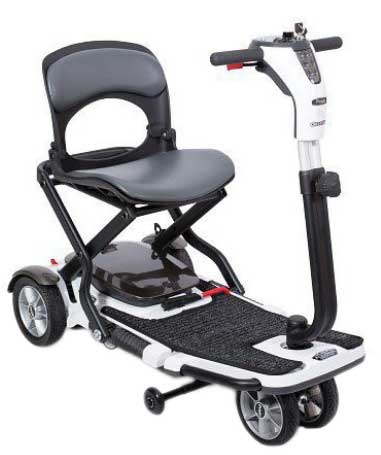
3-Wheel Plus
Some three-wheel models add another wheel adjacent to the third wheel for additional stability. Because the wheels are so close together, they still classify as three-wheel scooters. For easier identification, these scooters are referred to as "3-Wheel Plus" scooters. Many of these devices come equipped with anti-tippers for additional safety.
Examples:
The Shoprider Echo folds easily, has electric hand brakes for smooth stopping and has an elevated anti-skid footrest to keep feet in place.
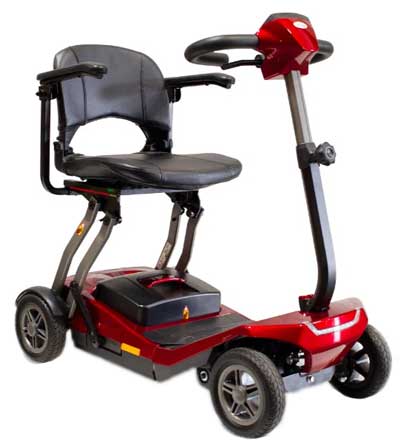
4-Wheel Electric Foldable Scooters
Four-wheel scooters usually have a wider wheelbase and offer better stability. There is more legroom and the seat is often wider and more comfortable. Four-wheel scooters are heavier and larger. This makes it more challenging for users to maneuver them in tight spaces and can be more difficult to transport and navigate steep slopes. These mobility devices are usually more expensive than their three-wheel scooter counterparts.
Examples:
1. eWheels EW-M35 4-Wheel Travel Scooter has a rotating seat, flip-up armrests, solid, non-pneumatic wheels and a strong, 250-watt motor.
2. eWheels EW-M39 4-Wheel Travel Scooter is an affordable travel scooter with an extra-thick seat back and seat cushion, travels up to nine miles on a single charge and has a maximum speed of 5 MPH.
Dismantling Scooters
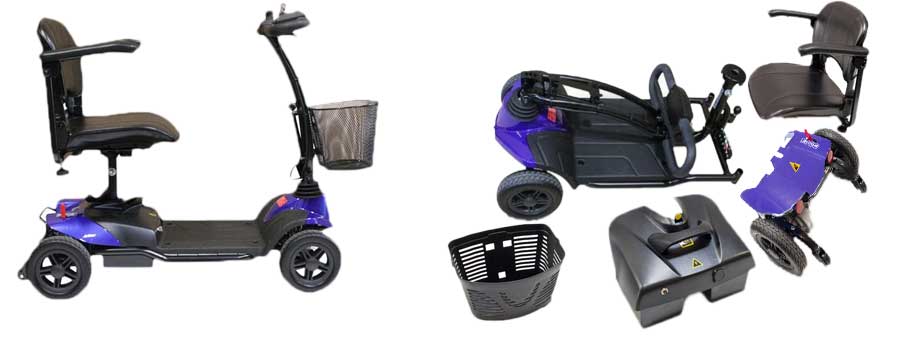
The purpose of disassembling a scooter is to make it more transportable. By breaking down the scooter into several parts, the pieces weigh less to make them easier to lift and to place in the trunk of a car. The design of many dismantling scooters supports the ease of assembly and disassembly. Many of these devices disassemble in seconds and reassemble just as fast.
Examples:
1. Pride Mobility Go-Go Elite Traveler 4-Wheel Mobility Scooter has a stable, four-wheeled construction, disassembles into five pieces for vehicle transport and has auto-latching mechanisms that make reassembly fast.
2. Pride Go-Go Ultra X 3-Wheel Travel Mobility Scooter has a modular design that disassembles into five lightweight pieces. Its compact design and narrow turning radius make navigating tight corners and crowds easier. It features flat-free tires and a large front basket to keep belongings close at hand.
Folding Scooters

An electric folding scooter folds down to a compact size for easy storage and transport. The original weight of the device does not decrease; however, the size is significantly reduced after folding. Some mobility devices fold electronically with the push of a button to minimize the amount of effort. Folding scooters can weigh between 34 to 83 lbs. For that reason, the heavier models can be challenging for some users to lift into a trunk.
Enjoy the freedom of a larger, more accessible world by utilizing one of these folding mobility scooters. Folding the scooter only takes a moment, too. For example, the folds in several quick and easy steps. After its initial assembly, users do not have to worry about taking it apart and putting it back together again, which will save time. This also prevents any pieces from getting lost or misplaced, which would cause the scooter to not function properly.
These features make folding scooters ideal for anyone under 275 lbs. who wants to be more independent. Because the scooters fold easily and fit into the trunk of a car, users do not need to install a power lift on their vehicles. Aside from being compact while folded, these folding scooters for adults are small when in use. They are not as bulky as many of the other standard-sized mobility scooter options, so they can maneuver within smaller areas that may not be accessible with a standard scooter. The compact sizes (when folded and unfolded) and portability allow users to take folding electric scooters to places that do not provide mobility aids, such as the library or a child's or grandchild's school play. Caregivers will also appreciate these convenient compact and lightweight folding scooter options.
Although these electric folding scooters are great for travel, they do have their limits: they are not designed for rough terrains. Folding scooters work well indoors and on relatively flat surfaces like sidewalks and roads. Do not expect great results while off-roading or while using on rough terrains. Also, foldable scooters cannot accommodate higher weight capacities, which could be a barrier for bariatric drivers. If a heavy-duty bariatric (over 300 lbs.) scooter is required or an electric scooter is needed that is better suited to navigate difficult terrains, check out the other available mobility scooters at Vitality Medical.
Examples:
- • Folding 4-Wheel Scooter:
Product Selection Continuum
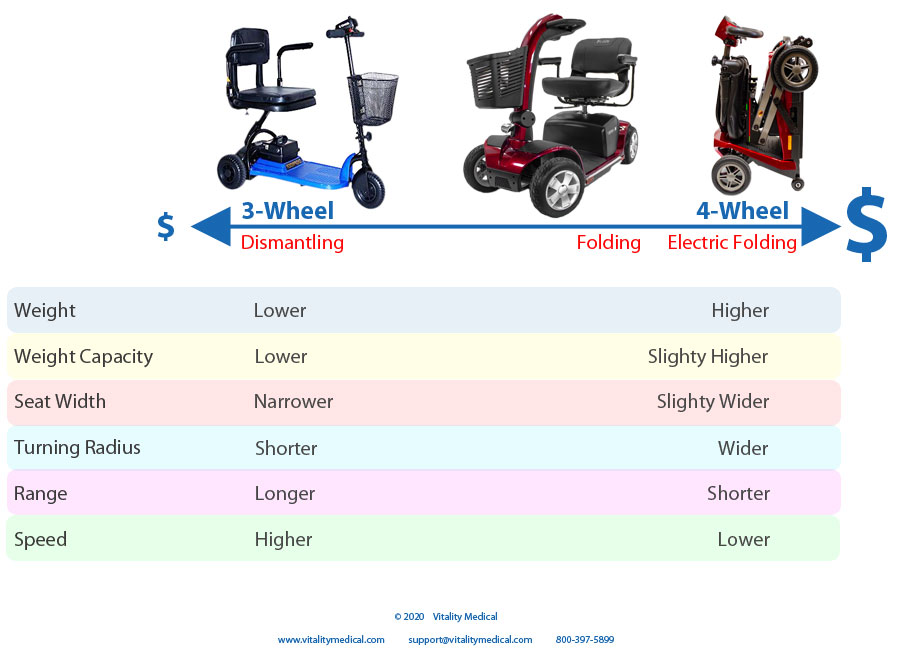
The product selection continuum above displays three-wheel scooters on the left and four-wheel scooters on the right. Pricing tends to be lower for the three-wheel scooter versions and higher for the four-wheel electric scooter options. Prices are also lower for the models that dismantle and disassemble; prices are higher for electric folding scooters. The most convenient push-button foldable scooter models are the most expensive.
The continuum also displays several significant scooter characteristics and where they generally fall along the continuum. The lower-weight models favor the three-wheel versions. The three-wheelers also tend to have higher speeds and more extended ranges than the four-wheel versions. Below are other key purchasing considerations:
1. Reverse Gear
A reverse function is a vital scooter selection criterion. This feature allows the mobility device to go backward when it is needed. Reverse is an essential scooter feature that enables it to navigate tight spaces. Reverse gear is available in both 3- and 4-wheel models but at higher costs.
2. Warranty Period
Extended warranty periods are factors and are based on the scooter’s manufacturer. Some manufacturers, such as Drive Medical and Pride Mobility, have lifetime warranties on the frames and two-year warranties on the electrical components.
3. In-home Service
Some manufacturers have agreements with local service providers that will adjust and repair scooters. Local repairs and primarily in-home service are more convenient than shipping a mobility aid back to the manufacturer when it requires maintenance. This added service is very convenient and can be an essential purchase consideration.
4. Total Weight
The mobility aid’s weight is significant and plays a massive role in portability, range, speed, max climbing angles and lifting ease. The lower the foldable scooter’s weight, the more favorable the mobility aid can perform. It is crucial to get the weight as low as possible, without compromising durability and safety.
5. Heaviest Part Weight
For devices that are dismantled for easy lifting and trunk storage, the individual component weights are significant. As people age, they have more difficulty lifting items and bending over to pick them up. Many manufacturers reduce the weight of individual components to make them easier to lift and transport.
6. Weight Capacity
Some mobility patients require a more durable, heavy-duty device to carry them where they need to go. A folding scooter can be very limited in its ability to function under heavy loads. None of the top ten foldable or dismantlable scooters can support weights over 300 lbs. A user may need to consider a standard bariatric scooter to sustain higher weights.
7. Seat Width
Seat widths affect the rider’s level of comfort. Generally, the wider the chair, the more comfort offered to the rider.
8. Max Climbing Angle
If the mobility aid must negotiate steep terrain, the maximum climbing angle becomes a significant factor. If a ramp is necessary to negotiate stairs, then the slope may be substantial as well. Many mobile devices can safely traverse up to a 5% grade. A few can go up to 10%. Buyers should consider this factor in their purchasing decisions.
9. Max Speed
Most mobility aids are on the slow side (5 miles per hour [MPH] or less). If speed is a critical factor for the user, they may want to consider some faster options like the eWheels Heavy-Duty Mobility Scooter EW-72, which can reach speeds up to 15 MPH.
10. Range
Range is closely related to the maximum speed of the mobility device. How far an electric scooter can travel on a fully charged battery can make a big difference in the user's freedom and independence. Some transport systems have low ranges of only six miles; others can go as far as 15 miles. Extended-range models are usually more expensive but are often worth the price. eWheels EW-54 Scooter Buggie has a range of up to 40 miles on a full charge.
11. Ground Clearance
Bumpy and uneven terrain requires higher ground clearance. Many of the mobility devices have a ground clearance of less than 2 inches. Higher clearance models tend to be less stable and are prone to tipping. For that reason, an anti-tipping accessory may also be necessary. Increased-width devices can also help with stability when the device has a high ground clearance. Users with rugged terrains to cross may want to select a higher ground clearance model with corresponding safety measures for safe transport.
12. Turning Radius
Electric scooters that can handle very tight corners are more maneuverable and are easier to operate. Some mobility aids have very short turning radiuses of only 20 inches; others may require 55 inches. Users who will drive their devices in tight places should consider the advantages of scooters with smaller turning radiuses.
13. Brake Systems
Advanced braking systems, such as hydraulic disc brakes, electromagnetic brakes and automatic braking systems, are significant safety features. These systems are easier to use and have better stopping power than mechanical braking systems. These advanced systems are more expensive; however, they are often worth the additional cost.
14. Compatibility with Airlines and Cruise Ships
Many retired seniors love to travel. Transport device compliance with airlines and cruise ship requirements may be essential factors for travelers. See the section on FAA Guidelines in the FAQ's below for more information.
An Electric Scooter's Anatomy
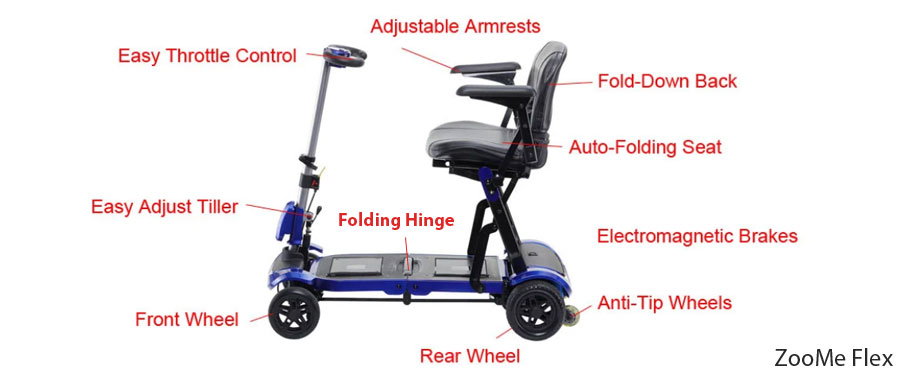
List of Additional Scooter Features for Purchasing Considerations
- Fully assembled and ready to use out of the box
- Storage: Baskets, under-seat storage or saddlebags
- Docking cradles
- Charging stations
- Remote controls
- Quick disassembly and assembly
- Interchangeable color panels
- Front and rear suspensions
- Digital dashboards
- Swivel seats
- Delta tillers
- Adjustable tillers
- Rearview mirrors
- Cupholders
- Cell phone holders
- USB chargers
- Fold-down backrests
- Height-adjustable swivel seats
- Padded armrests
- Reclining seatbacks
- Captain's chairs
- Overstuffed seats
- Two-rider seats
- Flat-free tires
- Non-marking tires
- Safety flags
- Legroom
- Anti-tippers
- Security: Key, FOB or security code
- Electronic folding (REMO Auto-Flex) functions
- Trolly modes for easy towing
- Adjustable handlebars
- Headlamps and tail lights
- Clutch throttles
Folding Scooter FAQ's
What is the most lightweight folding mobility scooter for adults?
Journey Health and Lifestyle’s So Lite Lightweight Folding Scooter weighs only 40.8 lbs. with its battery removed. It is available in two colors and has a two-touch folding function for easy use.
What are the best folding mobility scooters for sale?
Shoprider’s Echo Folding Scooter is a top-of-the-line mobility device. It folds easily for small-space storage or transport, weighs 59 lbs., and has a folding tiller that’s curved for better dexterity with a padded T-bar for extra comfort.
Top Ten Folding Scooter List
- Pride Go-Go Elite Traveler Plus
- Drive Spitfire Scout
- Drive ZooMe 3
- Shoprider Echo Wheel Scooter
- Pride Go-Go Ultra X
- Pride Go-Go Sport
- Pride Jazzy Zero Turn
- Drive Spitfire EX2
- Drive Spitfire DST
- Pride Go-Go Folding
Up-and-Coming Scooters
- Drive ZooMe Flex
- Pride iRide
- eWheels EFORCE1 EW-07
- eWheels EW-41
- eWheels EW-41
- eWheels EW-M50
- eWheels Auto-Flex
What are the FAA guidelines for mobility devices?
Some mobility scooters board onto aircraft as checked baggage. Others qualify as carry-ons. To meet carry-on requirements, the battery that powers the device must meet the following requirements:
- Electric scooter mobility devices must provide adequate protection to the batteries.
- Lithium-ion battery size is limited to 300-watt hours (Wh) or 25 grams equivalent lithium content (ELC).
- The one spare battery (not exceeding 300 Wh or two extra batteries not exceeding 160 Wh [13.5 grams ELC] each) may be carried in carry-on baggage.
- Lithium metal (non-rechargeable lithium) batteries are forbidden.
- Lithium-ion batteries must be removed from electric scooters; battery terminals must be protected from short circuits.
- Batteries must be protected from damage (e.g., by placing each battery in a protective pouch).
- Lithium-ion batteries can be carried in carry-on baggage only.
- Passengers must advise the airline of the battery’s location.
- Airlines must notify the pilot-in-command of the battery’s location in the cabin.
- Airlines may not accommodate a folded-up wheelchair/device in the passenger cabin.
- The device, with batteries removed, may travel as checked baggage.7
For electric scooter mobility devices eligible for baggage transport, the following guidelines apply:
Lithium-Ion Devices
- The battery may remain installed only if it is securely attached to the mobility device; the battery housing must provide protection from damage and the terminals must be protected from short circuits.
- When the batteries are adequately protected, they should remain installed in the mobility aid; however, there may be situations when that is not possible (or safe) to do so. In these cases, remove the batteries.
- The battery cables may remain connected only if the device is protected from accidental activation.
- A maximum of one spare battery that does not exceed 300 Wh (or two extra batteries not exceeding 160 Wh each) may be carried. Spare batteries must be carried in the cabin.8
Gel-, Absorbed Electrolyte- or Dry-Cell Battery Devices
- The battery may remain installed if it is securely attached to the mobility device, the battery housing protects it from damage and the terminals are protected from short circuits.
- The battery cables may remain connected only if the device is protected from accidental activation.
- For complete passenger instructions, contact the airline.
- Advance arrangements and extra check-in time may be necessary.
- A maximum of one spare battery is allowed per passenger, in accordance with airline instructions.
- Extra conditions and strong rigid packaging are required for spare batteries.9
Spillable Battery Devices
The battery may remain installed if it is securely attached to the mobile device, the battery housing provides protection from damage, the terminals are protected from short circuits and the battery remains in an upright position when stowed on the aircraft.10
Product Videos
Pride Mobility Go-Go Elite Traveller Plus Review Video (5:00 minutes)
Drive Medical Spitfire Scout 3 Review Video (1:01 minutes)
Shoprider Review Video (1:02 minutes)
eWheels EW-M35 Review Video (1:23 minutes)
ZooMe Flex Electronic Review Video (1:28 minutes)
Footnotes
- 4 Medicare's Wheelchair & Scooter Benefit. Revised October 2019. (Last Accessed August-31-2020)
- 5CLINICAL PRACTICE RECOMMENDATIONS FOR MOTORIZED WHEELED MOBILITY DEVICES: SCOOTERS, PUSHRIM-ACTIVATED POWER-ASSIST WHEELCHAIRS, POWER WHEELCHAIRS, AND POWER WHEELCHAIRS WITH ENHANCED FUNCTION. Recommendations for Motorized Wheeled Mobility Devices. VHA; Prosthetic and Sensory Aids Service. Veterans Administration. Page 1 (Last Accessed August-31-2020)
- 6 "CLINICAL PRACTICE RECOMMENDATIONS..." Pages 2-3. (Last Accessed August-31-2020)
- 7 "PackSafe for Passengers." Assistive Devices Tab, Wheelchairs and mobility devices with lithium ion batteries, collapsible design, battery removed. Federal Aviation Administration. United States Department of Transportation. (Last Accessed August-31-2020)
- 8 "PackSafe for Passengers." Assistive Devices Tab, Wheelchairs and mobility devices with lithium ion batteries, normal design, battery installed.(Last Accessed August-31-2020)
- 9 "PackSafe for Passengers." Assistive Devices Tab, Wheelchairs and mobility devices with non-spillable or dry batteries. (Last Accessed August-31-2020)
- 10 "PackSafe for Passengers." Assistive Devices Tab, Wheelchairs and mobility devices with spillable batteries.(Last Accessed August-31-2020)
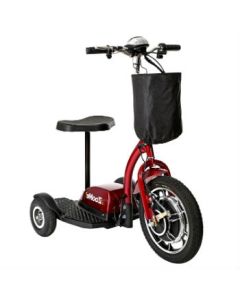
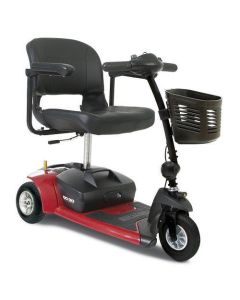
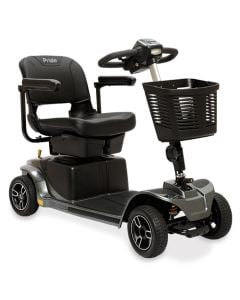
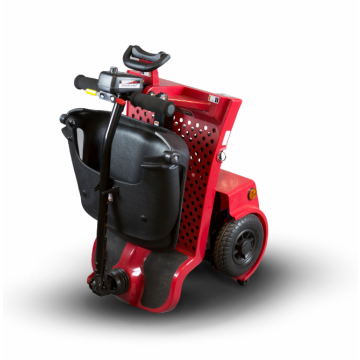
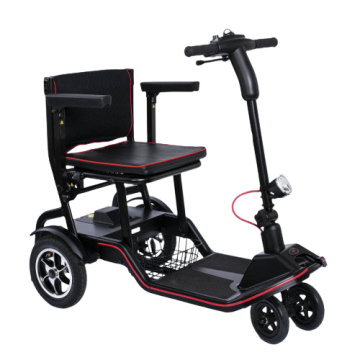
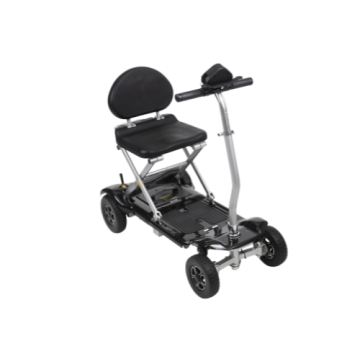
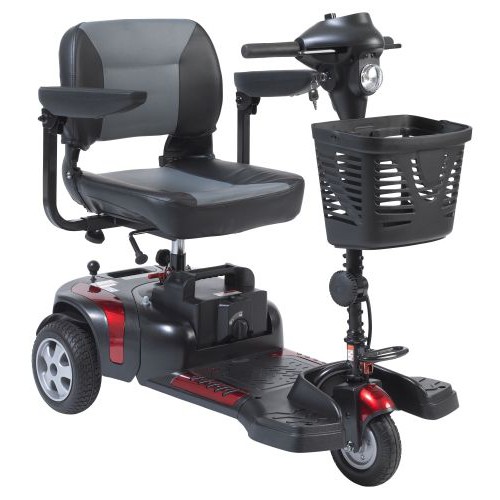
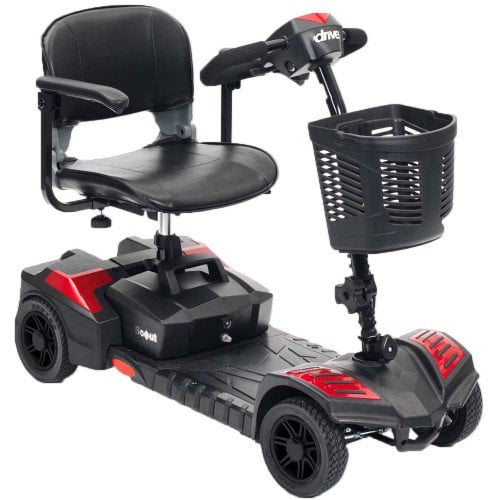
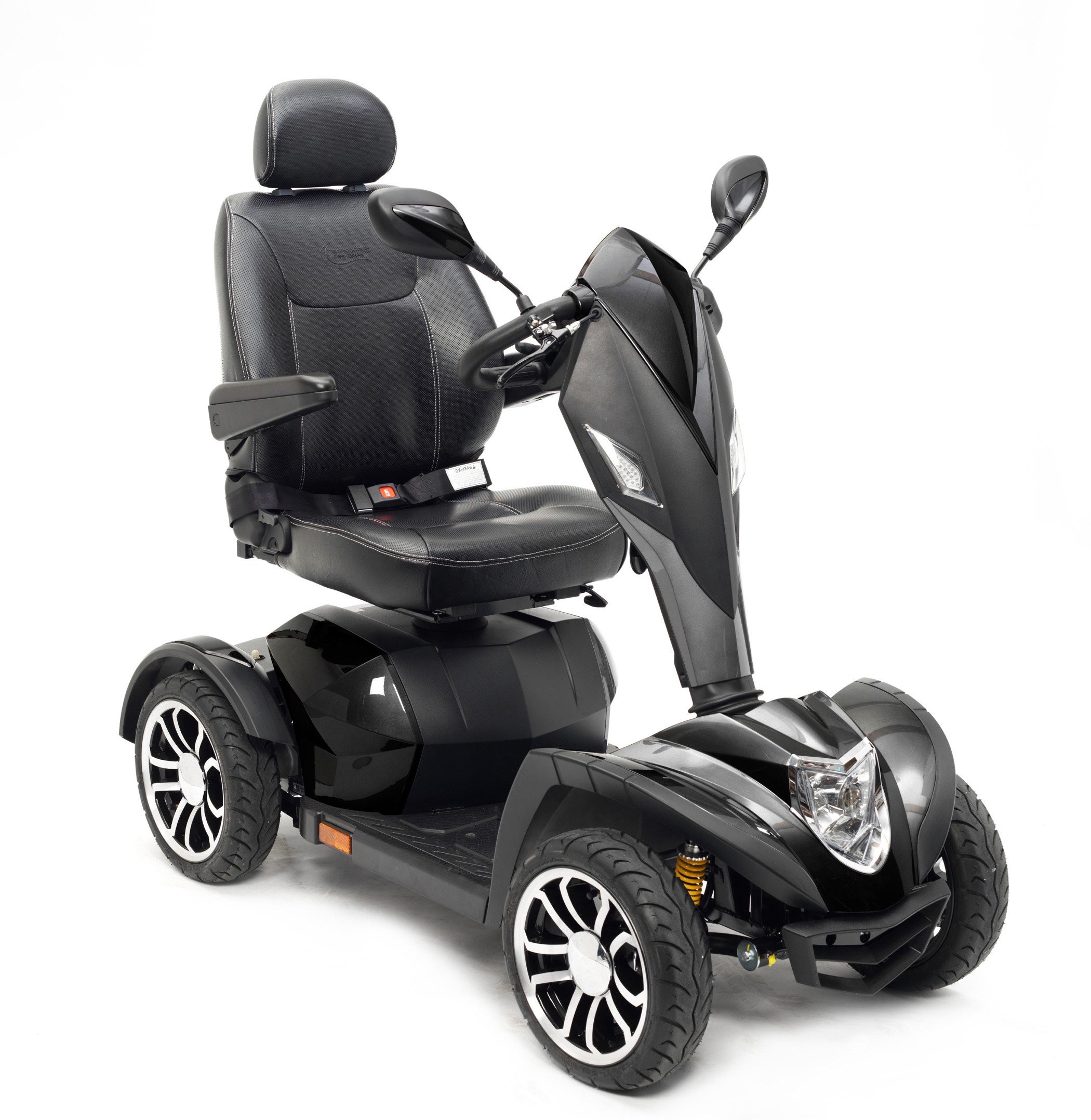
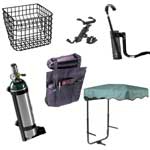
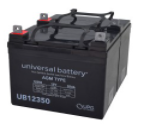

Login and Registration Form